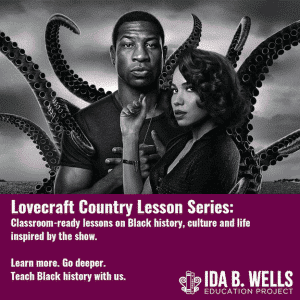 A group of classroom teachers in the Ida B. Wells Education Project have created a curriculum inspired by Misha Green’s HBO drama television series, Lovecraft Country.
A group of classroom teachers in the Ida B. Wells Education Project have created a curriculum inspired by Misha Green’s HBO drama television series, Lovecraft Country.
Centering the experiences of African Americans in the Jim Crow era of the 1950s, Lovecraft Country surfaces many key people and events in 20th century U.S. history including Denmark Vesey, sundown towns, James Baldwin, Billie Holiday, the Tulsa Massacre, Emmett Till, the Korean War, Jackie Robinson, Sonia Sanchez, the Green Book, cross burnings, police brutality, medical experiments on African Americans, rent parties, and so many more. While there are fictional monsters in this horror series, the greatest threat faced by the lead characters is from white supremacist terrorism. Therefore, themes of creative resistance, survival, love, and joy also permeate the show.
While the series itself is largely for an adult audience, it serves as a powerful touchstone for classroom lessons. Teachers in the Ida B. Wells Education Project explain why they developed this curriculum,
We’ve been inspired by the show Lovecraft Country to create a series of classroom-ready lessons related to topics featured on the show.
Our lessons center Black voices, Black history, and Black struggle and like everything we do, we hope these lessons can inspire young people to go out and make a better world. We are experienced classroom educators who have learned a lot about teaching “outside the textbook” over the years and we are dedicated to bringing our students real, relevant, and crucially needed info about important topics.
If you’ve ever wondered “Why didn’t they teach me about this?!” while watching Lovecraft Country, check out these lessons we’ve created to go deeper and learn more!
We offer the introduction to one of the lessons below as a sample of the full curriculum.
Meet the Real Letitia Lewis: Black Women Freedom Fighters Who Did Not Back Down
By Peta Lindsay
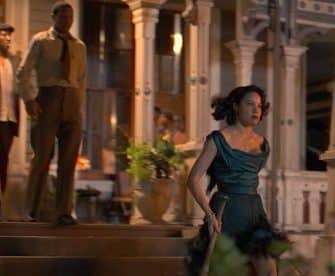 Few moments on TV have made me cheer like the moment in episode 3 of Lovecraft Country, “Holy Ghost,” when Letitia Lewis picked up her baseball bat. To me, that moment rang most true. The look on Letitia’s face reminded me of so many Black women I’ve known over the years, from my mother, to my aunts, and so many others — women who had been pushed just about as far as they were going to go — and now it’s time for everyone else to look out.
Few moments on TV have made me cheer like the moment in episode 3 of Lovecraft Country, “Holy Ghost,” when Letitia Lewis picked up her baseball bat. To me, that moment rang most true. The look on Letitia’s face reminded me of so many Black women I’ve known over the years, from my mother, to my aunts, and so many others — women who had been pushed just about as far as they were going to go — and now it’s time for everyone else to look out.
I appreciated the silent and resolute support of the men at her party, grabbing arms with no thought of stopping her, but instead to cover her back. Again, to me that looked so real. It looked like stories I’ve heard within my own family. It looked like our history.
In this lesson, I’d like to provide you with some historical connections to our real-life Letitia Lewises, in similar historical situations. The focus of this lesson is Black women freedom fighters who faced violence and white supremacist terror in opposition to their work, whether that terror be in the form of a racist mob, police, or the National Guard. Students will read accounts of racist terror and organized community defense, from women leaders who lived this history and did not back down.
The women selected for this lesson are Ida B. Wells, Fannie Lou Hamer, and Gloria Richardson. They lived in and worked in different years and regions, but a unifying sense of determination and resistance can be found in each of the excerpts provided for this lesson.
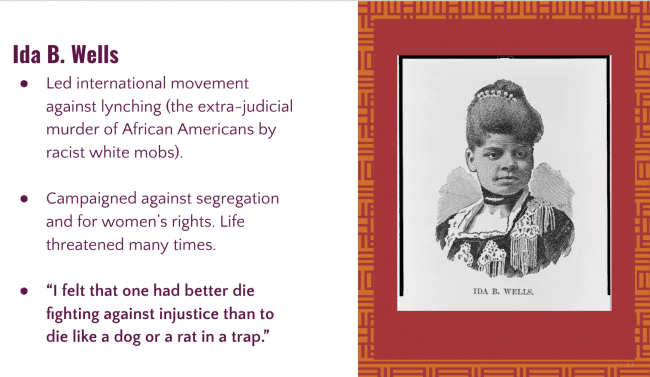
Our history textbooks often emphasize the “non-violent” elements of the Black Freedom struggle and minimize, if not outright ignore, the constant, oppressive role that racist white violence has played in so many Black families’ lives, my own included. Not only do our textbooks ignore the terror, they ignore the organized and often armed resistance that was widely-utilized and necessary to preserve Black life in these conditions. This creates an image of passivity for young people, who grow up believing that Black people have not historically defended themselves in the face of racism and brutality. It results in a disconnect from civil rights history and an unwillingness to be associated with that legacy.
I’ve too often heard jokes and seen memes about how “I’m not my grandparents, I’ll fight back” and these jokes make me so sad. Obviously, no one ever taught them how our ancestors often militantly defended their lives, their dignity, and their people.
Schools may want to de-emphasize violence but the violence was real and remains a fact of life for Black Americans. Understanding the long history of state-sanctioned white terror against African Americans is crucial to making sense of our world today. How else do you contextualize our society’s willingness to allow police officers and white vigilantes to murder unarmed African Americans on video, over and over? White supremacist, terrorist violence has increased exponentially since 2016. According to even the department of Homeland Security, it is a major threat facing our nation today.
In teaching this dark history, I choose to focus on our agency, shining a light for students on women who were bold, courageous, determined and successful in the face of this racist terror. Women like Letitia Lewis, who did not back down. Their legacy can inspire young people who just may find themselves on the wrong side of police brutality or other white supremacist violence, in their movements for justice today.
In this lesson, students will learn about resilience in the face of fear and how women just like them found the courage to change history. In addition to the quote in the image above with Ida B. Wells, here are some quotes from primary source documents in this lesson:
Read this lesson in full and find more lessons at Ida B. Wells Education Project.
Lesson Contents
A detailed multimedia slides presentation to guide this lesson, available here.
Full lesson plan with primary sources, graphic organizers and activity handouts, available here.
Primary Source Documents and Handouts doc — in case you just want to print student materials or read the words of these heroic women yourself, linked separately here.
Further Reading
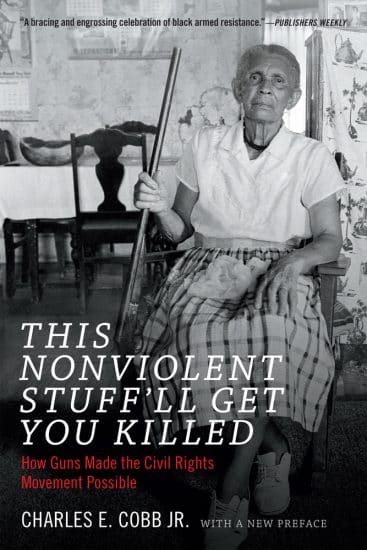 When and Where I Enter: The Impact of Black Women on Race and Sex in America
When and Where I Enter: The Impact of Black Women on Race and Sex in America
Crusade for Justice, the Autobiography of Ida B. Wells
Hands on the Freedom Plow: Personal Accounts of Women in SNCC
This Nonviolent Stuff’ll Get You Killed: How Guns Made the Civil Rights Movement Possible
“Recasting Civil Rights Leadership: Gloria Richardson and the Cambridge Movement.”
About the Author
Peta Lindsay is a high school teacher and executive director of the Ida B. Wells Education Project. Read more. The Ida B. Wells Education Project is participating in the Teach the Black Freedom Struggle campaign as one of the 25 Teaching for Black Lives Study Groups in the 2020-2021 school year.
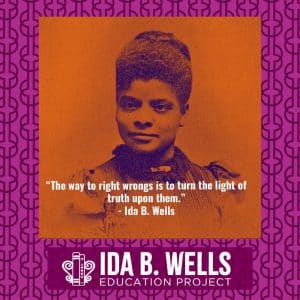 More Lovecraft Country Lessons
More Lovecraft Country Lessons
Here are additional Lovecraft Country lessons by the Ida B. Wells Education Project.
LESSON 2: “Ghosts of African American Literature: Exploring the Gothic in African American Literature” by Charla Johnson
LESSON 3: “Colorism: The Complexity of Complexion” by Martin Barrera
LESSON 4: “There Are People Buried Under the Doctor’s House” by Cyrus Hampton
More lessons are in the works! Follow the Ida B. Wells Education Project on Twitter and Facebook.

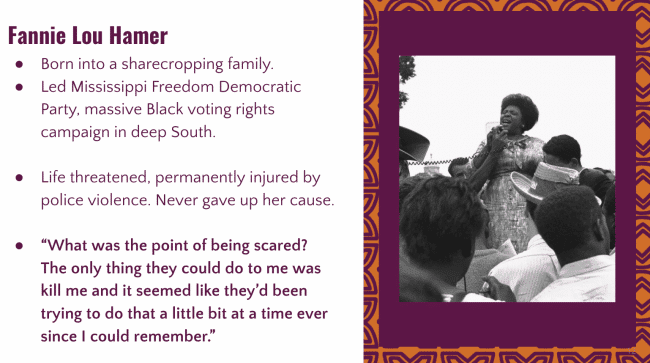
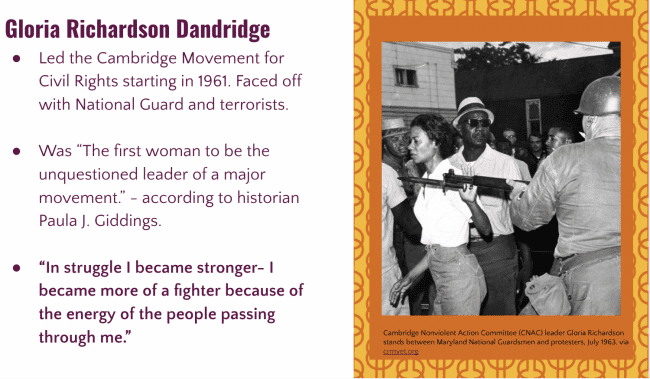
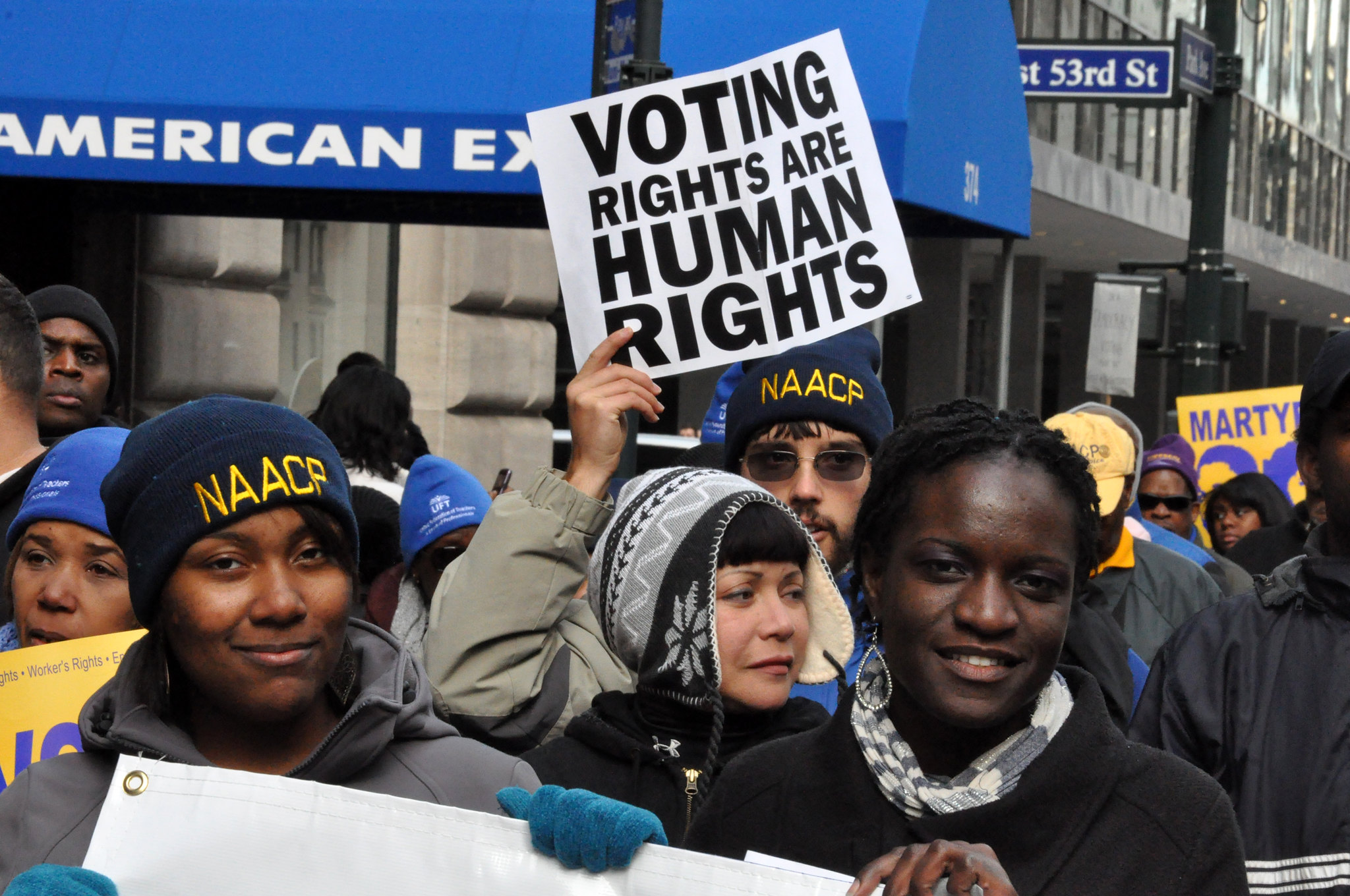
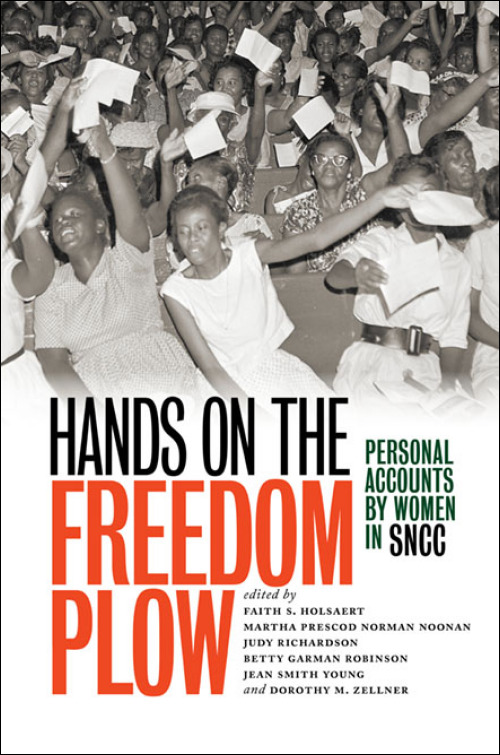
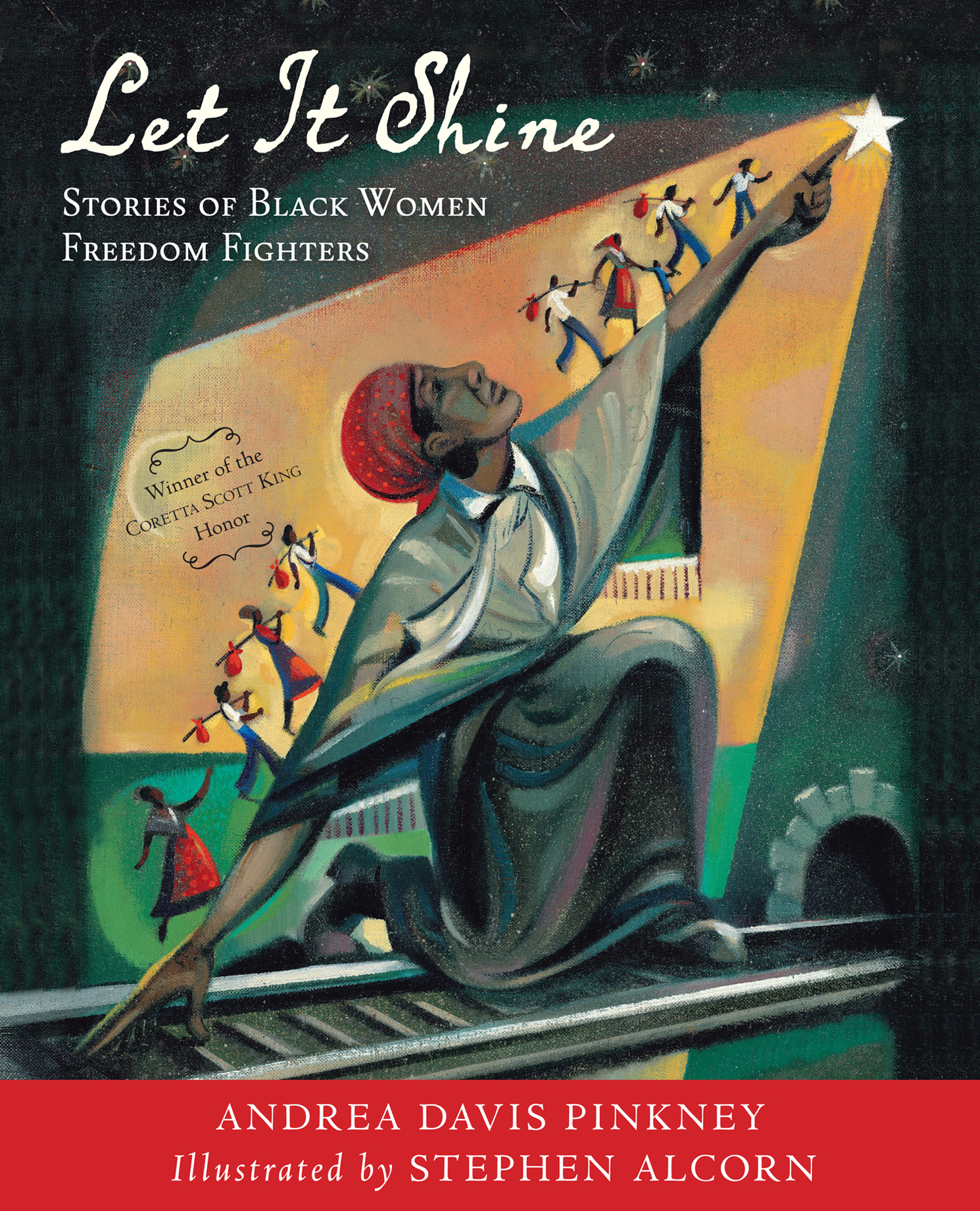

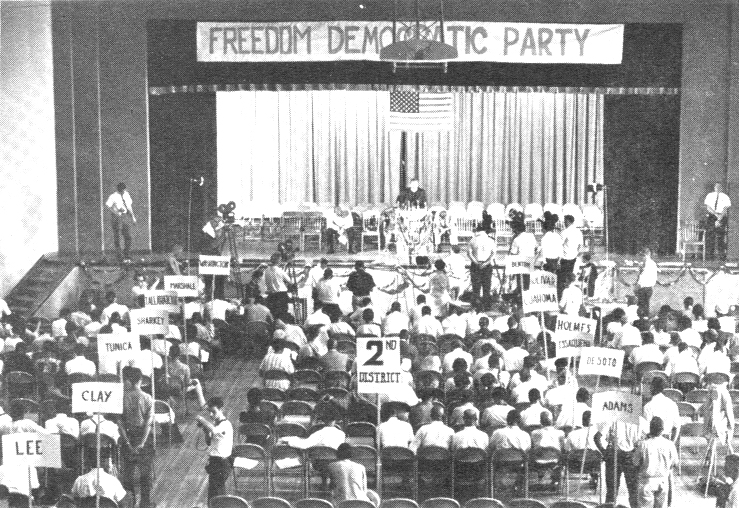
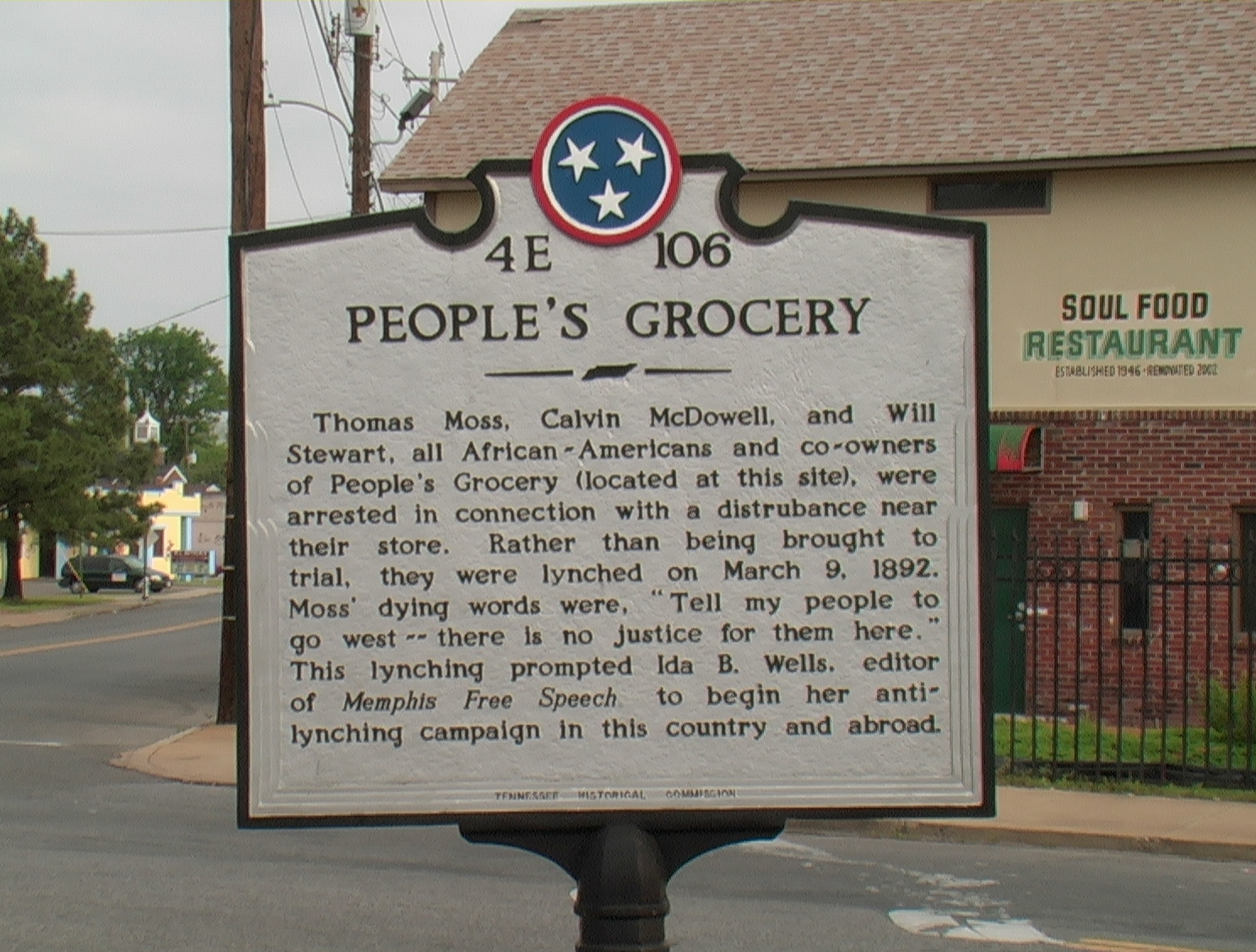
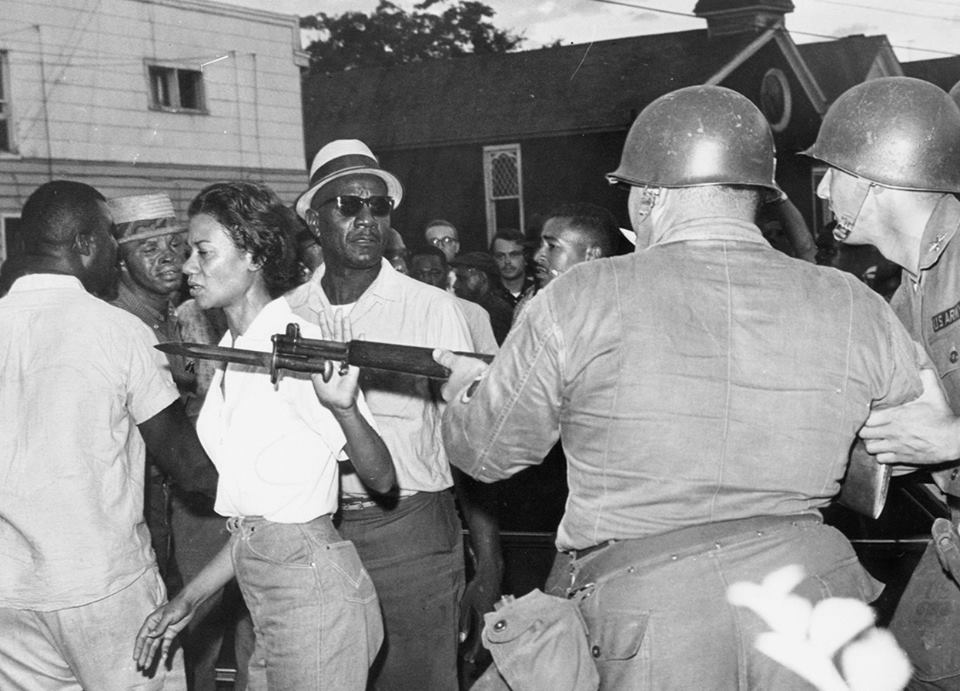
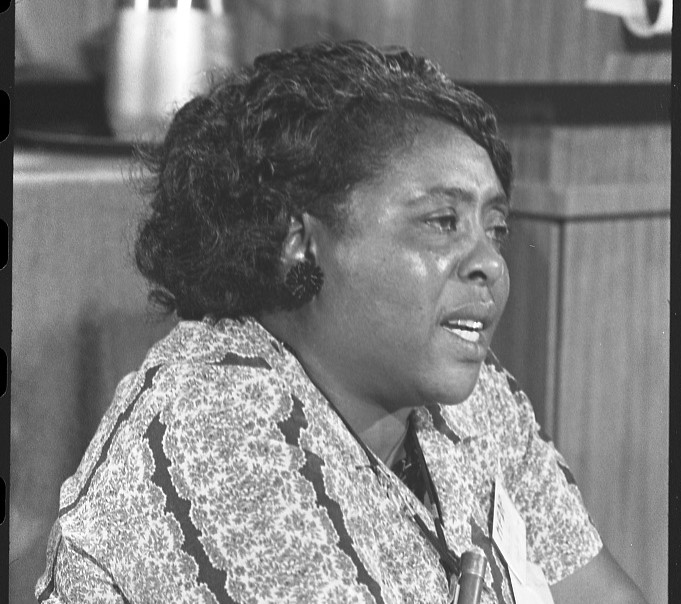





Twitter
Google plus
LinkedIn